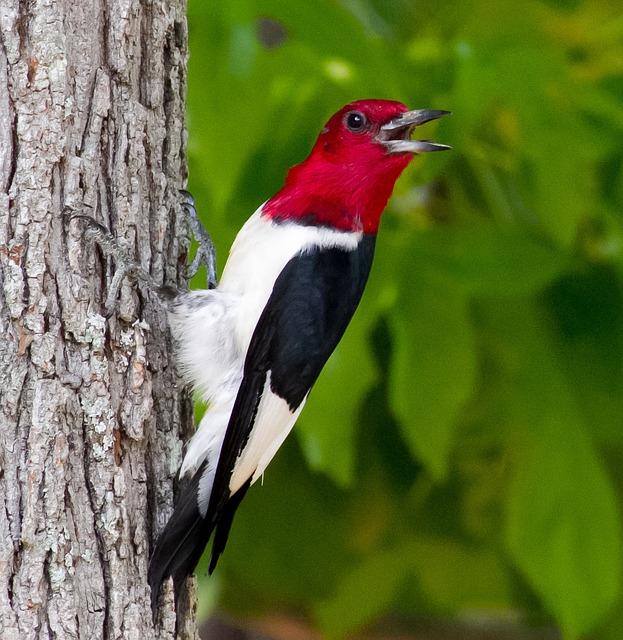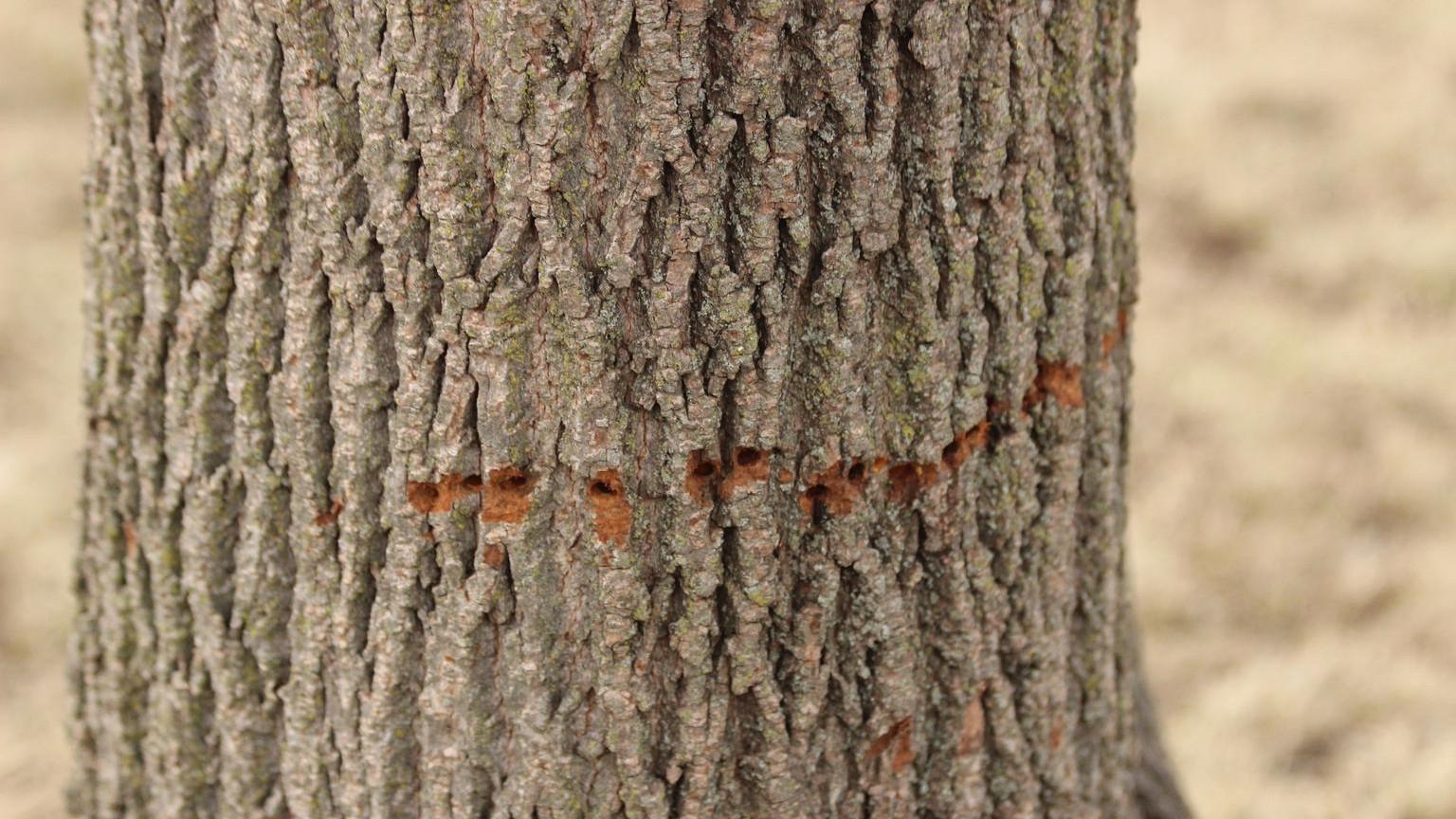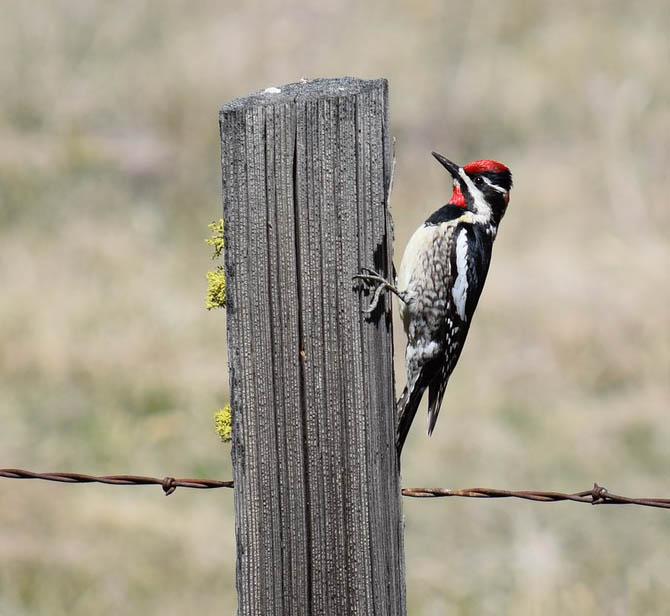Key points
- Woodpeckers belong to a unique group of birds that includes flickers and sapsuckers. In Maryland, one can commonly see the red-headed woodpecker, the downy woodpecker, the flicker, and sapsuckers.
- Occasionally, the pileated woodpecker, the largest of the woodpeckers, is heard and seen. The northern flicker and the red-headed woodpecker are migratory, but the rest live year-round in the same area.
- All woodpeckers have short legs with two sharp-clawed, backward-pointed toes and stiff tail feathers used as a supportive prop. These traits enable them to easily climb up and down the trunks of trees.
- They are most often seen in or near woodlands, where they find food and shelter. Most feed on free-living or wood-boring insects. Some, like the flickers, get most of their insects from the ground, and some will eat berries and seeds.
- Many woodpeckers will use man made structures to build a nest, such as wooden fence posts, utility poles, and even wooden buildings. They also build their nests in natural cavities. A clutch of 4 to 8 eggs is laid in the spring.
- On forest trees, the wounds of attacked trees may attract insects as well as porcupines or tree squirrels. These feeding wounds may also serve as entrances for diseases and wood decaying organisms.

Woodpecker behavior
- One misconception is that woodpeckers make holes only in search of insects. Many species will make holes in sound wood where no insects exist.
- Sapsuckers drill numerous rows of 1/4 - 3/8 inch closely spaced holes in healthy trees to feed on sap and the insects entrapped by the sap. They may feed on ornamental or fruit trees.
- Holes may be enlarged through continued pecking or limb growth, and large patches of bark may be removed or sloughed off. Occasionally limb and trunk girdling may kill the tree. Woodpeckers also communicate with each other by "drumming" on trees or even metal, such as gutters and downspouts.

Management
Houses with wood siding, especially cedar and redwood siding may be damaged by woodpecker activity. Problem areas should be covered with lightweight mesh netting or metal barriers to discourage them. Woodpeckers can be very persistent and are not easily driven from their territories. Visual or sound-type of repellents need to be used as soon as the problem is identified and before territories become well established. Another approach is to distract the nuisance bird with tasty food by providing suet in the winter. Avoid using suet in the summer, as it quickly becomes rancid and may sicken the birds.
To protect trees from woodpeckers, wrap barriers of 1/4 inch hardware cloth, plastic mesh, or burlap around injured areas to discourage further damage. This method may be practical for high-value ornamental or shade trees. In orchards and forested areas, it may be best to let the sapsuckers work on one or more of their favorite trees. Discouraging them from select trees may encourage the birds to disperse to others, causing damage to a greater number of trees.

